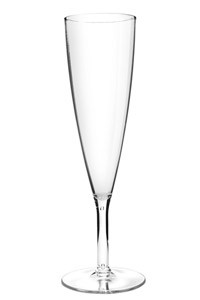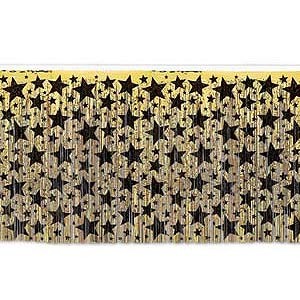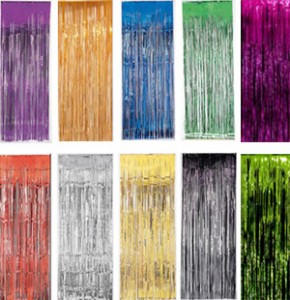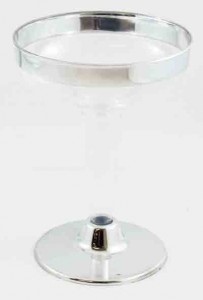Suggestions for a Worthwhile Wine Tasting Party Experience
 Find ways to gather friends and acquaintances to celebrate and to party. Hosting a wine tasting party is an imaginative way to invite and be with friends to learn a thing or two about wines. You don’t have to be a wine connoisseur to notice nuances in both red and white wines from focused wine tasting events.
Find ways to gather friends and acquaintances to celebrate and to party. Hosting a wine tasting party is an imaginative way to invite and be with friends to learn a thing or two about wines. You don’t have to be a wine connoisseur to notice nuances in both red and white wines from focused wine tasting events.
To make the wine tasting party a worthwhile experience, here is a list of practical suggestions to consider:
- Decide on the type of wine tasting to hold
Decide what type of wine tasting event you want to hold, after which, you plan the necessary details accordingly. The sample types of tastings to choose from are: vertical wine tasting; horizontal wine tasting; old-world versus new world wines; wine and cheese pairing, etc.
The simplest type is the stand-alone tasting where guests can concentrate only on what they are drinking. Guests need not even do a formal rating of the wine.
Alternatively, combine wine tasting with a dinner, or cocktail party, or other gathering. Make sure to use the right type of wine glass to achieve the best effect – silver cocktail glasses, silver martini glasses, champagne resort glasses, etc.
- Guest list
 Invites are sent two weeks before the event is held. Groups that can comfortably fit around your dining or kitchen table seem to be the right number to invite. Consider also the wine savvy of your invites. Gather a group with similar level of exposures in wine tasting.
Invites are sent two weeks before the event is held. Groups that can comfortably fit around your dining or kitchen table seem to be the right number to invite. Consider also the wine savvy of your invites. Gather a group with similar level of exposures in wine tasting.
- Invitations
Print more formal invitations if you plan to hold a more elaborate tasting, otherwise, invites sent by email or done by phone are sufficient. Otherwise, you can send out Hollywood-themed invitations to go with a Hollywood-themed wine-tasting party. You need to explain to your guests though that the party is a wine testing event (not a cocktail or a dinner party), and tell your guests upfront what your party is like and the role that the guests are expected to play. Be sure to indicate in the invitations the kind of food to be served and not to wear strong perfume or cologne as the smell of perfume can interfere with wine tasting. To avoid mix ups, make it clear to your guests if you require them to bring a specific wine or food. Give a deadline to your RSVP invitations. Know in advance the number of participants in the tasting to make sure you have enough of each wine to be sampled.
- Tasting card
Create a tasting card or a tasting grid to be used. A typical tasting card includes the name and type of wine, the vineyard source, and the year of the wine. Included in the tasting card are the items, as well as how you want the wine to be rated, such as:
- Color and intensity
- Aroma
- Flavor, acidity, sweetness
- Tannins, body, alcohol level
- Finnish and complexity
- Do you like the wine?
 For a more casual wine tasting, simply ask your guests to write down their own observations about the wine and which ones they like the most or the least.
For a more casual wine tasting, simply ask your guests to write down their own observations about the wine and which ones they like the most or the least.
Line up the bottles on the table so guests can have a preview of what they are sampling and can look at the labels to know a little more about the wine.
Doing blind tasting is more challenging and you still need to provide each guest a tasting card. In blind tasting, pour each wine without identifying the label. Guests will rely on their senses to identify the respective wines and do the rating accordingly.
- The party space and room décor
Wine tasting is better done in a large kitchen or dining table to accommodate the necessary tasting supplies and to allow guests to sit, taste, and take down notes in their tasting cards with ease. Alternatively, set up wine tasting at parts of the house like the living room.
Avoid elaborate flower arrangements and scented candles and anything with strong smell as it can interfere with wine tasting. You would probably do well to use metallic foil curtains or metallic foil table skirting.
- Tasting wines and other tips
Wine tastings normally start with white wines – starting with dry then sweet – then on to red wines – starting with light then to full-bodied ones. Start also from younger then to more mature wines.
The general rule is to pour about 2 ounces per glass per person for each wine. Guests sample each wine and note the wine’s unique characteristics on their tasting cards.
 Having plain bread and water in between wines allow guests to cleanse their palate, make them ready for the next wine.
Having plain bread and water in between wines allow guests to cleanse their palate, make them ready for the next wine.
Guests are encouraged to share their thoughts and humor on each wine, after all it’s a party and it’s supposed to be fun.
There is an element of mystery, even snobbishness in the world of wine. Wine tasting can be a scary experience if you’ve never been to one before. However, wine tasting is really a simple, non-mysterious process, and an enjoyable experience to be had. You simply need to be aware of some of the etiquette and procedures in wine tasting and you will be on your way to a pleasurable and fruitful wine tasting party experience.

